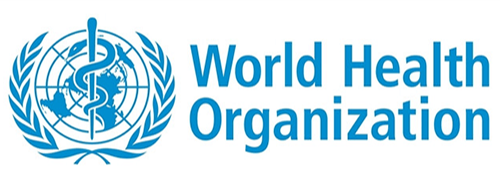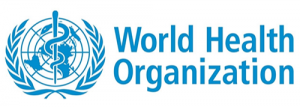How SSP supports the implementation of the WHO Guidelines on sanitation and health
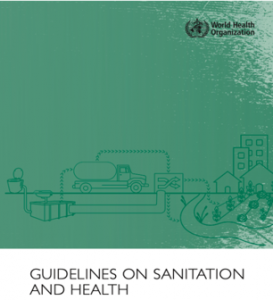
In 2018 the World Health Organization WHO launched its first comprehensive guidelines on sanitation and health to promote safe sanitation systems and practices. The guidelines aim to provide evidence-informed recommendations and offer guidance to ensure international, national and local sanitation policies and programmes effectively protect public health.
According to the guidelines, sanitation is defined as “access to and use of facilities and services for the safe disposal of human urine and faeces”. Furthermore, a safe sanitation system is defined as “a system that separates human excreta from human contact at all steps of the sanitation service chain from toilet capture and containment through emptying, transport, treatment (in-situ or o site) and final disposal or end use” (see Fig. 1).

Fig. 1: Sanitation Service Chain
In its chapter 2, the WHO Guidelines on Water and Sanitation indicates 4 recommendations for action by national and local authorities to ensure safe sanitation systems and practices that promote health:
- Recommendation 1: Ensure universal access and use of toilets that safely contain excreta.
- Recommendation 2: Ensure universal access to safe systems along the entire sanitation service chain.
- Recommendation 3: Sanitation should be addressed as part of locally delivered services and broader development programmes and policies.
- Recommendation 4: The health sector should fulfil core functions to ensure safe sanitation to protect public health.
Of key interest is recommendation 2, that “highlights the need to ensure systems and services are selected to respond to the local context and that investment and system management are based on local risk assessments along the entire sanitation chain, so users and the community are protected. In addition, it recognizes the need for protection of sanitation workers through safe working conditions”.
Sanitation Safety Planning (SSP) is the WHO recommended approach for local risk assessment and management for sanitation systems. This can identify incremental improvements at each step of the sanitation service chain (Fig 1) to allow progressive implementation towards sanitation targets and allows investments to be prioritized according to the highest health risk and thereby maximize gain. Furthermore, SSP can and should take into consideration current and future risks, including those posed by climate variability and climate change.
Sanitation Safety Planning
Sanitation Safety Planning (SSP), developed by the World Health Organization in 2015, is a step-by-step risk-based approach to assist in the implementation of local level risk assessment and management for the sanitation service chain – from toilet, containment/storage and treatment, conveyance, treatment and end use or disposal.
The SSP process offers a platform to coordinate efforts, bringing together relevant stakeholders along the sanitation chain, such as authorities, environmental health staff, water and wastewater utility managers, sanitation entrepreneurs and farmers, to:
- Identify hazards, hazardous events and health risks in each step of the sanitation system;
- Prioritize the highest risks and use them to inform decisions about improvements;
- Agree on improvements (control measures), including technology upgrades, improved operational procedures and behavioural changes;
- Define regular monitoring and validation mechanisms.
This approach ensures that the selected control measures actually target the greatest health risks, emphasizing, as well, the importance of incremental improvement over time. SSP also provides assurance to the public and authorities of the system performance based on sound risk-based management. SSP can be used both at the planning stage for new schemes, and to improve the performance of existing systems
Figure 2 presents the modules of the SSP manual, which indicate the steps of the SSP process. While in module 1 “Prepare for SSP” stakeholders define the SSP area, leadership, team composition and priorities, during modules 2 to 5 key actors carry out a risk assessment and define health risk-based management system. The outputs are two key documents:
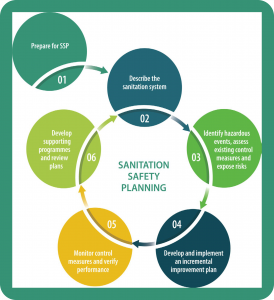
- Prioritized, incremental improvement plan.
- Operational monitoring plan for regular monitoring and periodic verification.
Although these documents are needed for the implementation of improvement measures (Module 4) and monitoring (Module 5), Sanitation Safety Planning is not about writing plans. It must be understood that it is a risk-based management approach, and requires a continuous revision, evaluation, adaptation and learning, for what an enabling environment (adequate institutional and regulatory framework, coordination, financial means and capacities) is required (Module 6).
The success of implementing Sanitation Safety Planning lays on having a leader with the capacities and commitment to launch and sustain the process. In large and complex systems. a Local Steering Committee can provids leadership, coordination and oversight of the entire process, and that is able to advocate and secure financial resources as well as amend the legal framework if needed.
Furthermore, a Local SSP team, composed by representatives of all the steps of the sanitation service chain, as well as relevant authorities and exposure groups is key for the success of the SSP process.
For more information:
 Guidelines on sanitation and health Guidelines on sanitation and health |
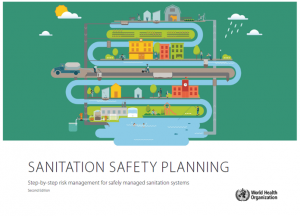 Sanitation Safety Planning Manual Sanitation Safety Planning Manual |
